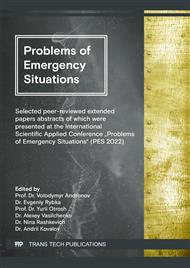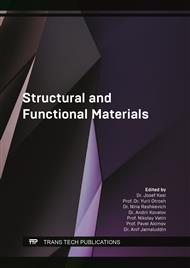p.43
p.49
p.57
p.63
p.70
p.77
p.82
p.87
p.94
Cluster Structure Control of Coatings by Electrochemical Coprecipitation of Metals to Obtain Target Technological Properties
Abstract:
The article considers the possibility of controlling the macromolecular structure of ternary alloys in the form of compact coatings, which are obtained by electrochemical means. This method of obtaining metal clusters is more economical than from plasma one. The influence of the cluster structure of the synthesized coatings in the form of a triple alloy of polyligand complex electrolytes on their functional properties is shown. There are presented the results of testing coatings from this ternary alloy of different elemental and cluster composition for microhardness according to Vickers. The highest microhardness was obtained by the coating with the lowest molecular weight of the cluster, which provided a denser packing of atoms.
Info:
Periodical:
Pages:
70-76
Citation:
Online since:
July 2022
Authors:
Price:
Сopyright:
© 2022 Trans Tech Publications Ltd. All Rights Reserved
Share:
Citation:



